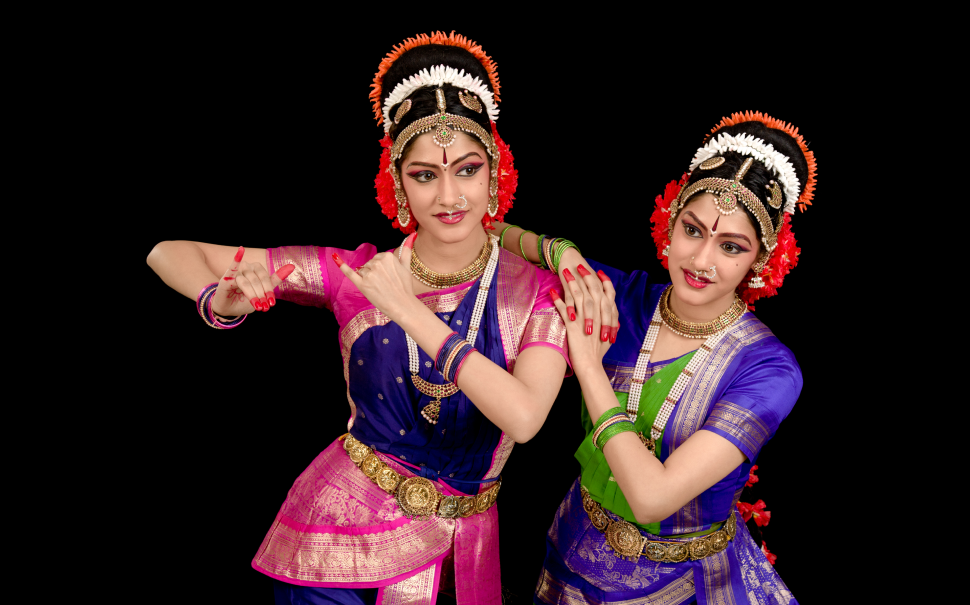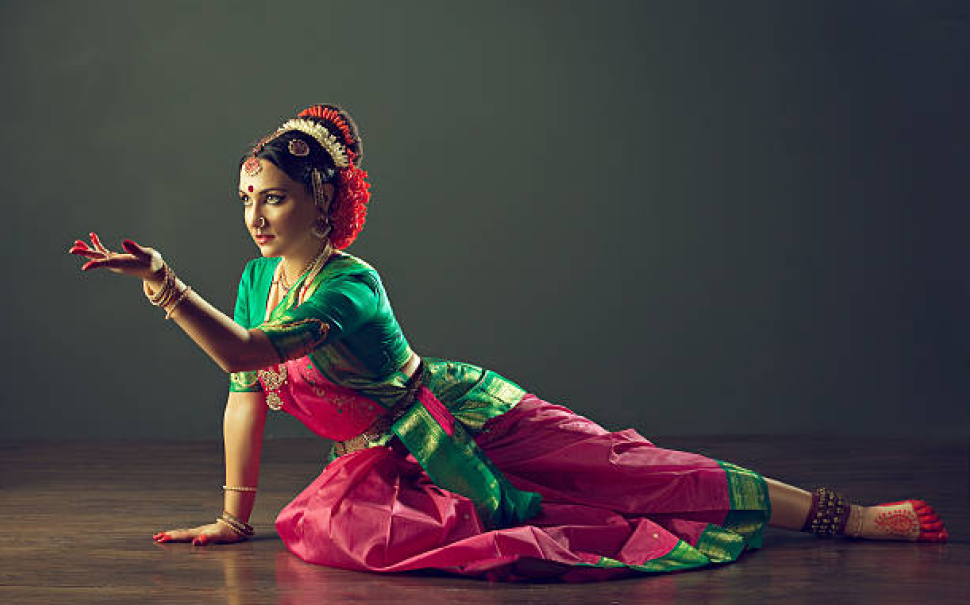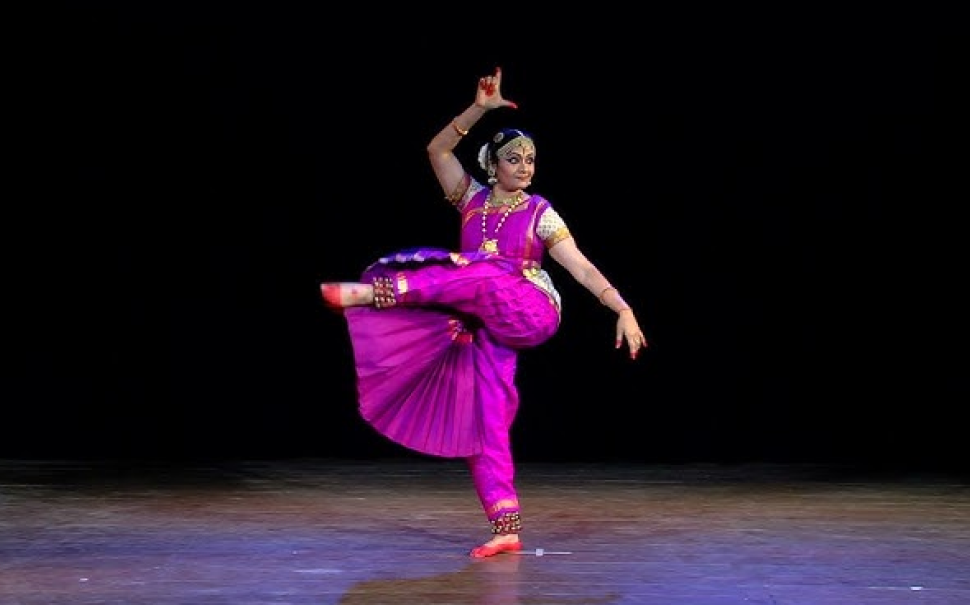Kuchipudi Classical Dance, hailing from India’s vibrant state of Andhra Pradesh, is more than just a captivating performance. It’s a living tapestry woven with centuries-old traditions, storytelling, and spiritual yearning. Its diverse and evocative repertoire reflects the essence of Indian culture, while its core tenets guide dancers in their artistic journey. Let’s delve into this mesmerizing dance form, exploring its rich tapestry of performances and the fundamental principles that shape it.
The Enchanting Tapestry: A Glimpse into the Repertoire
Kuchipudi dancers in India are renowned for their storytelling prowess, which is evident in the diverse themes explored through their repertoire. Here are some of the key categories:
⦁ Natya Shastra: This ancient Sanskrit treatise on performance arts forms the bedrock of Kuchipudi. Dances like Bhama Kalapam and Yashodhara Stuti depict narratives from the Mahabharata and Puranas, immersing audiences in mythology.
⦁ Padams: These lyrical compositions, often in Telugu, delve into themes of love, devotion, and spiritual contemplation. Tarangam, featuring rhythmic footwork and intricate hand gestures, is a famous Padam showcasing the dancer’s technical virtuosity.
⦁ Nrittam: Pure dance, devoid of narrative elements, is celebrated through Jatiswarams and Tillanas. These showcase the dancer’s command over rhythm, agility, and grace, often accompanied by complex talas and energetic beats.
⦁ Bhakti Bhajanas: Devotional songs dedicated to deities like Shiva and Krishna are integral to Kuchipudi. Dancers like Yamini Reddy have captivated audiences with their soulful renditions of these Bhajanas, creating an atmosphere of spiritual ecstasy.
⦁ Social Commentary: Contemporary interpretations of Kuchipudi address social issues like gender equality and environmental concerns. Performances like Ardhanareeswarudu and Vande Mataram showcase the dance form’s evolving nature, reflecting modern society’s realities.

The Enchanting Tapestry: A Glimpse into the Repertoire
While the repertoire offers diverse themes, the core tenets of Kuchipudi remain constant, shaping the dancer’s approach and performance. These include:
⦁ Nritta, Nritya, Natya: This trinity of pure dance, expressive dance, and mime forms the foundation of Kuchipudi. Dancers strive to master these elements to create a holistic performance.
⦁ Abhinaya: The art of expression, encompassing facial expressions, hand gestures, and body movements, is crucial to conveying emotions and narratives in Kuchipudi. Dancers utilize the Hastasampradaya, a system of hand gestures, to communicate various emotions and actions.
⦁ Tala and Laya: Kuchipudi’s rhythmic framework and tempo are vital elements. Dancers train rigorously to understand and master different talas, ensuring their movements are precise and synchronized with the music.
⦁ Nattuvangam: This rhythmic guidance by the Nattuvanar, using syllables and footwork, is the conductor for the entire performance. Dancers learn to interpret and respond to the Nattuvangam, ensuring seamless coordination between music and movement.
⦁ Bhakti and Rasa: Devotion and emotional expression are central to Kuchipudi. Dancers strive to connect with the divine and evoke various emotions in the audience, like joy, sorrow, and anger, through their performance.

Beyond the Stage: The Legacy of Kuchipudi
Kuchipudi dance form is not merely a performance; it’s a cultural heritage passed down through generations. Renowned dancers like Dr. Vempati Chinna Satyam and Y.M. Vyjayantimala have dedicated their lives to preserving and promoting this art form. Today, Kuchipudi dancers in India continue to captivate audiences worldwide, carrying the rich legacy forward with each captivating performance.
Legendary Performances: Kuchipudi on the World Stage
Kuchipudi dance form has enthralled audiences globally with its captivating storytelling and vibrant artistry. Some iconic performances have etched themselves in the history of this dance form:
⦁ Dr. Vempati Chinna Satyam’s “Shiva Tandava”: This electrifying portrayal of Lord Shiva’s cosmic dance of creation and destruction showcased Satyam’s unparalleled mastery of Nritta, Nritya, and Natya. His powerful movements and expressive gestures brought the divine dancer to life, awakening audiences.
⦁ Yamini Reddy’s “Meera Bhajan”: Renowned for her soulful renditions, Reddy captivated audiences with her portrayal of the mystical love of Meera for Lord Krishna. Her evocative expressions, graceful movements, and mellifluous singing created an atmosphere of devotional ecstasy.
⦁ Rajkumar Kalavapudi’s “Sri Rama Pattabhishekam”: This visually stunning portrayal of Rama’s coronation ceremony showcased the grandeur and opulence of Indian royalty. Kalavapudi’s meticulous attention to detail in costumes, props, and choreography transported audiences to the heart of the Ramayana epic.
Delving Deeper: A Glimpse into Individual Dance Styles
The Kuchipudi repertoire boasts various dance styles, each with its unique characteristics:
⦁ Bhama Kalapam: This ancient dance drama narrates the story of Bhama, Krishna’s wife, and her jealous confrontation with Rukmini. It features elaborate costumes, dramatic expressions, and rhythmic footwork, portraying love and anger equally.
⦁ Tarangam: This pure dance composition showcases the dancer’s technical virtuosity through intricate footwork and rhythmic patterns performed on a brass plate. The rhythmic interplay between the dancer and the metal plate creates a captivating and mesmerizing experience.
⦁ Tillana: This energetic dance celebrates joy and festivity through fast-paced movements and playful expressions. The vibrant costumes and rhythmic beats create a light-hearted atmosphere, engaging the audience in the joyous celebration.

As the curtain falls on a Kuchipudi performance, the echo of rhythmic beats, the intricate stories told through dance, and the evocative expressions stay etched in the hearts of the audience. Kuchipudi dance form is more than just a visual spectacle; it’s a living testimony to India’s rich cultural heritage. By exploring its diverse repertoire, understanding its core tenets, and witnessing its transformative power, we can appreciate the true essence of this captivating art form. With its varied repertoire, guiding tenets, and enduring legacy, this dance form serves as a testament to the beauty and depth of Indian culture.

